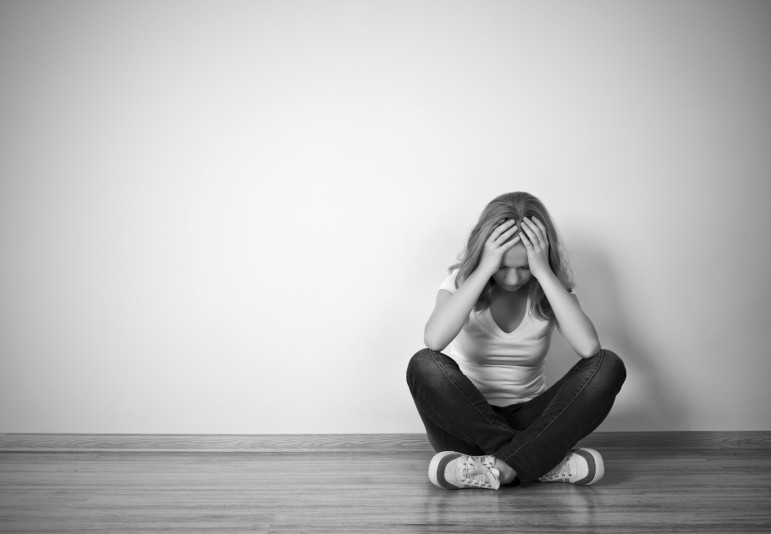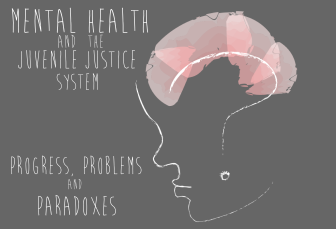
The window for the innocent, carefree days of childhood is shrinking. Children are suffering from anxiety, depression and obsessive-compulsive disorders.
“Kids mature in some ways so much faster today, but you can be physically and mentally developed but not emotionally developed,” said Dr. Michael Peck, a clinical psychologist in Los Angeles who was the director of the suicide prevention program for California schools from 1984-87.
Early exposure to conflicting and confusing messages in the media is part of the problem, Peck and other experts said, with young children regularly exposed to violent and sexual images that are difficult even for adults to process. That can lead to feelings of fear and anxiety much earlier in children than in generations past.
Of the 75 million people younger than 18 in the United States, the Child Mind Institute of New York estimates that 17 million of them have or have had some form of mood or behavioral disorder. That is based on diagnostic interviews done by professionals on a sample of young people 13 to 18.
Not only are the numbers of stressed-out, anxious kids rising, but the age at which they begin to feel anxious, stressed or depressed is dropping. A generation ago, youth began feeling symptoms of depression or anxiety as young as 13 or 14, Peck said. Now, he and other experts said it is not uncommon for children as young as 10 to develop depression or anxiety. About one-third of 13-year-olds reported feeling anxiety at least once before their 13th birthday, said Dr. Erik Lewandowski, a professor of psychiatry at New York University’s Child Study Center at Langone Medical Center.
Stress is a big part of the reason, but being rejected, teased and bullied can also harm a young person’s well-being. “They are so subject to social approval, which used to be how you were treated in the lunchroom,” Peck said. Social media have changed the social dynamic for young people in more profound ways than for adults because of kids’ heightened need for social approval.
[Related: Recognizing Mental Illness In Youth]
Facebook may connect hundreds, or even thousands, of people, but it can also be an easy way to disconnect — and to hurt another person.
“Rejecting people is a lot easier if you’re not looking at them,” Peck said.
Rejection for preteens and teens can be a crippling experience, experts said, particularly if the young person does not have help to get through it. Stress over school, problems at home and the loss of a parent can all have negative consequences for them.
Getting help for preteens can be difficult, because they are not very good at articulating their emotional state, experts said.
“The main issue is that it takes up to two years before a parent seeks help for their children, because they don’t know, or parents just may not know what to do,” said Dr. Kristin Carothers of the Child Mind Institute.
In addition to not being able to talk about their feelings, preteens may not want to. It can be easy for parents and teachers to overlook a child who is in pain when the child is not externalizing symptoms.
“Parents and teachers are really good at catching externalizing behaviors, like inattention,” Carothers said. “We’re not as good at identifying internalizing behaviors, like sadness and depression.”
[module type=”aside” align=”right”] Learn more about mental health on JJIE.org’s Juvenile Justice Resource Hub.
[/module]
Learn more about mental health on JJIE.org’s Juvenile Justice Resource Hub.
[/module]
Kids who are eager to please and feeling a great deal of anxiety over pleasing their parents, coaches and teachers often do not want to let the adults in their lives know they are experiencing anything that might not please them.
And they have different symptoms than adults do, the experts said. For example, 10- to 12-year-olds with depression may show irritability. And, as any parent knows, even the most placid youngsters can have bouts of irritability, making it hard for parents to know when to seek help.
Parents can more easily observe obsessive-compulsive disorder, which preteens might engage in as a way to manage anxiety, Carothers said.
“Where obsessive-compulsive disorder comes into play is with compulsive behavior, where you convince yourself that there will be some element of relief by engaging in a behavior,” Carothers said. Some OCD can be biologically based, but most springs from anxiety and an attempt to manage it.
Anxiety can also be linked to depression, the experts said, so helping them get help is important. While medications such as antidepressants are sometimes used to help youth cope, the most effective treatment is cognitive behavior therapy, in which kids can learn to identify, express and manage feelings appropriately. However, accessing such treatment can be a challenge due to a shortage of child and adolescent mental health providers, particularly in inner cities and in some rural settings.
“A lot of it is helping kids cope,” Peck said.
Parents play an important role, of course.
“And usually that is about attentive parenting, avoiding the helicopter parenting. Also, it’s about parents being role models and instilling values in their children, enforcing rules,” Peck said.
Lewandowski of NYU said the goal should be to erase anxiety from a child’s life.
“A point to keep in mind in the case of anxiety is that our aim should be to prevent clinically significant and impairing anxiety, but not to abolish anxiety altogether. Anxiety, or worry, is a normal and necessary human emotion, without which we could not anticipate negative future consequences and adjust our actions to avoid or prevent them,” Lewandowski wrote in an email.
As in many illnesses and disorders, the best treatment for anxiety and depression in preteens may not be just prevention but the active promotion of good mental health, the experts said.
“What will promote mental health rather than what will prevent depression or anxiety?” Lewandowski said. “What will help children thrive? The most critical factor is strong, supportive relationships, first with parents and later with peers, with peer relationships becoming a more important support as children grow. Other positive experiences, especially those that help children to feel a sense of competence, success, and connection, socially, academically, and at home.”
Those things are particularly important for children in high-risk situations, such as those with a high hereditary risk and those who experience chronic stress, such as poverty, violence or medical illness or death of a parent.
More articles related to this one:
Minnesota High School Screens Students for ACEs to Develop Trauma-informed Education
Translating the Science of Childhood Stress Into Youth Service Practice
Stress May Intensify Depression in Abused Children


























